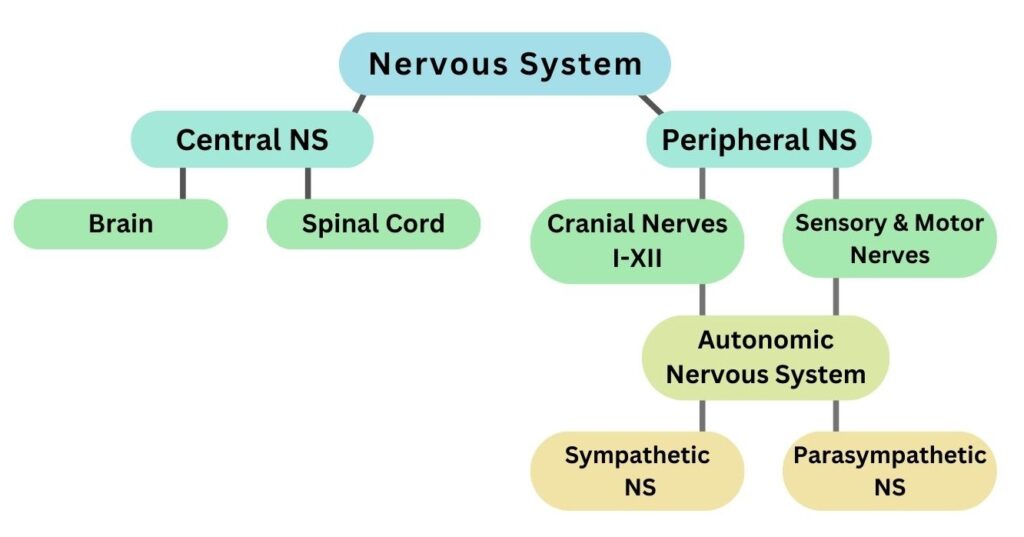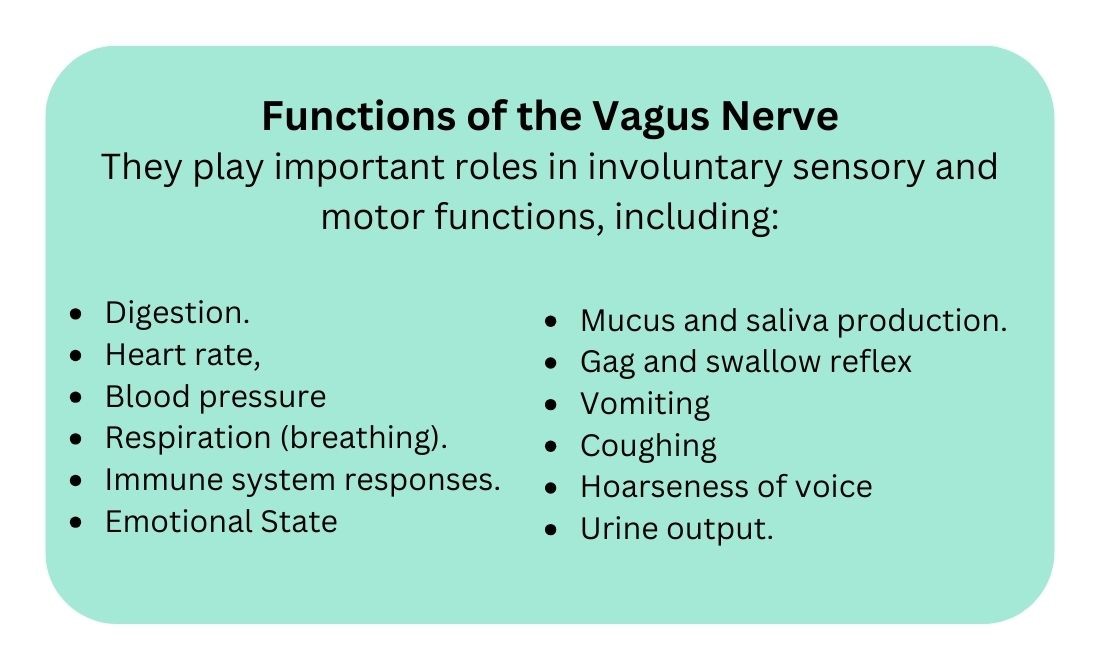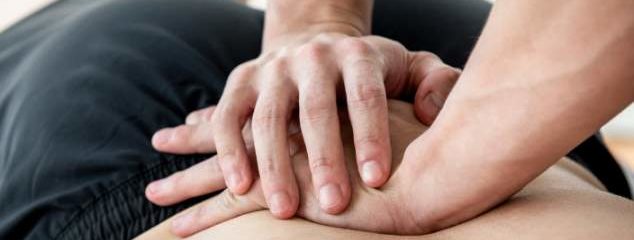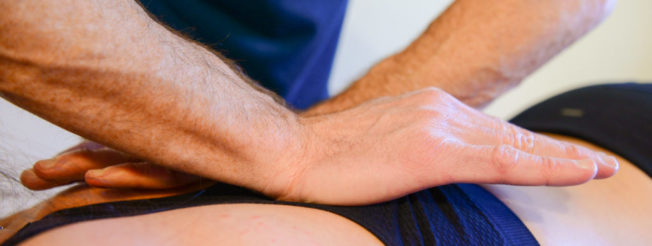When the Vagus Nerve is not functioning properly our emotional and physical well-being can suffer dramatically.
|
General Summary from Part 1
|
In Part 1 of this series we introduced the basic anatomy and function of the autonomic nervous system (ANS) and vagus nerve. In this article we adapt a more functional perspective look at what happens when it is no longer functioning properly and why it matters. In Part 3 we look at various treatments for vagus nerve dysfunction, as well as how brain integration and/or physical therapy can help.
Three states of the Autonomic Nervous system

As we learned in Part 1, the autonomic nervous system (ANS) pathways regulate involuntary body activities such as heart rate, blood pressure, respiration, sweating, digestion, and sexual arousal. One of the jobs of the ANS is to prioritize the regulation of these functions by coordinating states of rest, “fight or flight”, and “freeze.”
The synchronized balance between these states ensures you can function from a healthy state and be ready to respond to potential threats as needed. All parts of the brain, body and higher self continuously communicate to best dictate how they should function in each moment. The ANS controls major body systems, is directly involved in the well-being of your physical and mental health, and sets the tone for the way you interact with the world.
To accomplish this, the ANS has three states that function in a hierarchical manner:
-
Ventral Vagal (Parasympathetic) This is the “Rest and Digest” state. It allows you to feel safe, engaged, present, and enables you to effectively communicate and form healthy emotional attachments. It also manages bodily functions such as digestion, sleep, respiration, and reproduction when you are in this relaxed state.
In this state your body is in constant communication with your brain, providing it with feedback and responding to both the internal state of your body and the to the external state of your environment. It is continuously determining whether or not we are safe, and if we need to be alert, or if it is okay to relax. It modulates the fight or flight response of the Sympathetic NS, and returns our bodies to a more relaxed and balanced state once the stress or danger has passed.
-
Sympathetic– this is the state of Fight or Flight. It kicks in when safety and survival are at risk. This helps to mobilize us in the presence of an actual or perceived threat by increasing blood pressure, heart rate and blood flow to support the activity of response. This often happens when we are in a dangerous or emotionally stressful situation. Additionally, we experience this state during exercise, and sexual arousal.
- Dorsal Vagal (Parasympathetic) If you cannot fight or flee, or if the danger is overwhelming, a protective “freeze state” ensues. Your body down regulates and causes metabolic shut down or causes us go numb to protect ourselves. When this state kicks in, the two other states shut down. The freeze state should be a temporary strategy to help cope with stressful or traumatic events.
Normal Autonomic & Vagus Nerve Function
A healthy parasympathetic nervous system allows us to flow fluidly between these states as our environment and situation requires. Fight/Flight states should only last for brief periods and then return to a normal calm condition, allowing for normal metabolic activity and social engagement. In this state we can learn, grow, develop relationships, and experience joy. This is the desired nervous system state most of the time.
Autonomic & Vagus Nerve Dysfunction
A state of dysfunction occurs when a relaxed ventral vagal (rest and digest”) state

cannot be maintained. The brain no longer receives signals that it is safe to be calm, rest, or digest. It can no longer return to its normal, calm settings, but remains on high-alert (fight/flight) or becomes overwhelmed (freeze) due to prolonged stress, trauma, or disease, it defaults to deep seeded fight or flight programming, which may no longer be appropriate for the situation. This can quickly take a toll on our physical and emotional conditions.
Vagus nerve dysfunction can be seen in medical diagnosis such as: Chronic pain, chronic anxiety, fibromyalgia, POTS, Lyme’s disease, Long COVID, chronic fatigue syndrome, adrenal burnout, gastroparesis, small intestine bacterial overgrowth, and ADHD. Symptoms of vagus nerve dysfunction are listed in the chart above.
SUMMARY
Our ANS is designed to easily switch between different levels of alertness in order to coordinate vital bodily functions and states survival readiness. When the system is stuck in a high alert (fight/flight) or shut down (freeze) state, it is no longer able to function from a calm, healthy place. Assistance may be needed to return to the healthy state of “rest and digest” so that our minds can calm and our vital body processes can work they way they were designed to.
The good news is that help is available!
Vagus Nerve Physical Therapy Treatment Prescott Arizona
Symptoms of Chronic Freeze State
-
-
-
Feeling “stuck” * Feeling Anti-Social * Disengagement
-
Anxiety * Lack of clarity * Irritability
-
Depression * Reduced productivity or creative flow * Loss of Joy
-
Apathy * Inability to pursue goals * Lack of Energy
-
-
Continue reading our Vagus Nerve Series:
Vagus Nerve – Part 3 – Alternative Treatments for Vagus Nerve Dysfunctions

Vagus Nerve – Part 4 – Simple Exercises to Balance the Vagus Nerve.
RESOURCES
- Hayden, Wendy. The Vagus Nerve Gut Brain Connection: Heal your Vagus Nerve and Improve Gut Health. 2021.
- Park, Yumi. Unleash Your Vagus Nerve. Stimulate Your Vagal Tone and Activate Its Healing Power with Daily Exercises to overcome Anxiety, Depression, Inflammation, Autoimmunity, Brain Fog, and Gut Sensitivities. 2022.
- Rosenberg, S; Shield; B, Porges, S. Accessing the Healing Power of the Vagus Nerve: Self-Help Exercises for Anxiety, Depression, Trauma, and Autism. North Atlantic Books, 2017.
- Weller, Melanie. The Vitality Code: Vagus Nerve Activation. 2018, 2020. Professional continuing education course. https://www.melanieweller.com/
- Weller, Melanie. The Vagus Nerve Decompression Course. September 2022. Professional continuing education course. https://www.melanieweller.com/
- https://www.psychologytoday.com/us/blog/talking-about-trauma/202206/polyvagal-theory-approach-understanding-trauma
- VIDEO: https://www.youtube.com/watch?v=8AnHlx3qZ30








